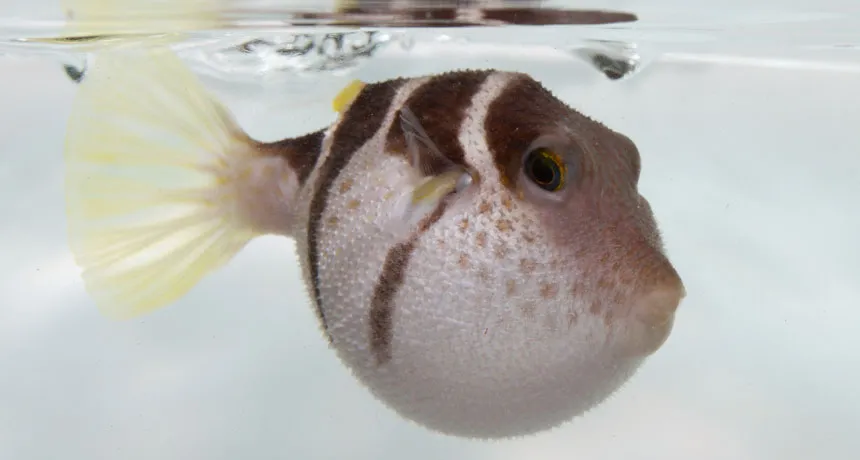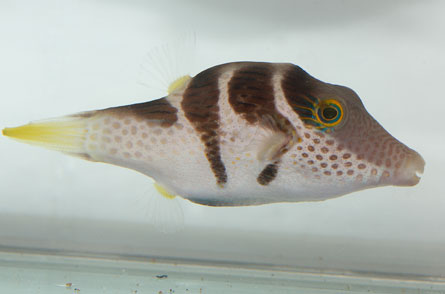That puffed-up pufferfish isn’t holding its breath

This black-saddled pufferfish is full of water, not air. The fish puff out to prevent themselves from being eaten.
© Philip Mercurio
- More than 2 years ago
Pufferfish have a couple of ways to defend themselves: They have an incredibly potent toxin in their flesh, and they can puff themselves out into a spine-covered ball that’s pretty difficult to eat. When all puffed up, the animals look a little like the face of a person who’s holding his breath. Perhaps that’s where they got a reputation for not breathing while inflated, an idea that has found its way into everything from Finding Nemo to scientific papers. Instead, some thought, the fish could be breathing through a skin full of blood capillaries. But that’s all wrong, according to a new study. The fish do indeed breathe while inflated.
Georgia Evelyn McGee of James Cook University and Timothy Darren Clark of the Australian Institute of Marine Science, both in Townsville, Australia, collected black-saddled pufferfish from the Great Barrier Reef and took them back to the lab. They then measured the fish’s oxygen use before, during and after inflation. The results of their study appear December 3 in Biology Letters.

Instead, when the fish inflates, oxygen consumption spikes. While inflated, that consumption starts to decrease, then it spikes again when the fish deflates. But it takes an average of 5.6 hours for the pufferfish’s oxygen consumption to come back down to normal levels. That long recovery period is necessary after a few seconds of frantically trying to avoid a predator and taking in huge gulps of water, activities that probably use up some of the fish’s energy stores. In other pufferfish species, scientists have documented fatigue so severe that the fish require more time to recover after each inflation or become completely unable to inflate after multiple blow-ups.
“Clearly, a compromised ability to inflate following successive inflation events would be detrimental to predator evasion and thus impact the fitness and survival of pufferfishes in the natural environment,” the researchers note.
Moral of the story: Don’t toy with a pufferfish just because you want to see it inflate. You may cause it to get so tired out that it won’t be able to handle a real threat when it comes along.






